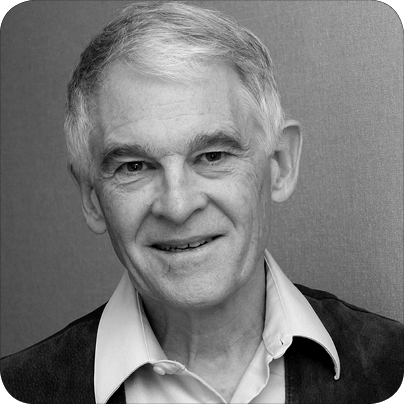|
| The Experimental Analysis of Change |
| Tuesday, September 29, 2015 |
| 8:00 AM–8:50 AM |
| Taketori |
| Area: EAB; Domain: Experimental Analysis |
| Chair: Kennon Andy Lattal (West Virginia University) |
| CE Instructor: Kennon Andy Lattal, Ph.D. |
| Abstract: Presenters will discuss the experimental analysis of change. |
| Instruction Level: Basic |
| Target Audience: TBD |
| Learning Objectives: TBD |
| |
Stability: Criterion, Operant, or Transient State? |
| TAKAYUKI SAKAGAMI (Keio University) |
| Abstract: When we think about stability of behavior in the context of the experimental analysis of behavior, it has, at least, two meanings. The first is an antonym of instability. Using stable behavior as the criterion for changing experimental conditions is the standard practice of behavior analysts. Thus far, several stability criteria have been proposed and we have seen them in many behavior-analytic references. In our own work, we have experienced sometimes, however, circumstances in which it is difficult to meet a stability criterion. These circumstances raise the question of whether we ever achieve steady or stable behavioral states when experiments extend over a long period. The second meaning of stability is an antonym of variability. We use the terms discrimination and generalization to call a researcher's attention to a specific aspect of the same behavioral phenomenon. We use the terms sensitization and habituation to focus on different effects of the same stimulus. We use the terms stability and variability to emphasize the observer's perspective on the same behavioral stream. For example, some indexes of variability such as the U value have been used in the context of “variability as an operant” studies. Researchers have determined the final stable value of the variability-index by consulting the standard stability criterion, and then compared it with other values produced by other contingencies. But are there any contingency-operations that control stability like variability? Is maintaining an ongoing contingency the only way to achieve this? This point may be related to the issue of a behavioral unit for manipulating by contingencies. Do these two meanings, antonyms of instability and variability, reflect different levels of behavioral status or states? In this presentation, I first will summarize how behavior analysts have defined “stability” and proposed its criteria in their experimental situations. Following this, I will provide some examples from which we can consider the next step in addressing the issues of behavioral stability and its change. |
 Dr. Takayuki Sakagami is Professor of Psychology at Keio University and a researcher in the experimental analysis of behavior, interested in reinforement schedule, choice behavior, and behavioral economics. He has published more than 50 scientific articles and co-edited several books and dictionaries related behavior analysis and behavioral decision making. He has served on the editorial boards of two Japanese journals, and on the Executive Council of Japanese Association of Behavior Analysis. He started his tenure as president of the Japanese Psychonomic Society in 2011. Dr. Takayuki Sakagami is Professor of Psychology at Keio University and a researcher in the experimental analysis of behavior, interested in reinforement schedule, choice behavior, and behavioral economics. He has published more than 50 scientific articles and co-edited several books and dictionaries related behavior analysis and behavioral decision making. He has served on the editorial boards of two Japanese journals, and on the Executive Council of Japanese Association of Behavior Analysis. He started his tenure as president of the Japanese Psychonomic Society in 2011. |
| |
Fleeting Behavioral Phenomena |
| KENNON ANDY LATTAL (West Virginia University) |
| Abstract: The Heike monogatari reminds us that, “The knell of the bells at the Gion temple/Echoes the impermanence of all things.” So it is also that behavior is fleeting and impermanent. Most of what we study in the experimental analysis of behavior, we do by comparing steady states, ignoring or dismissing what interferes with or occurs between those periods of relatively invariant responding. In this presentation, I will consider what happens as the behavioral versions of the sounds of the Gion temple bells change with the passage of time. Although behavior analysis predominantly has been very usefully concerned with longer-term stable behavior, there is much of interest in the transitions and transient changes that are interspersed within more stable and enduring behavioral phenomena. This presentation reviews some experimental investigations of these more fleeting behavioral phenomena, things like transitions between schedules of reinforcement, extinction, momentary adjustments to dynamic environments, and changes in reinforcement over time. |
 Dr. Kennon Andy Lattal is Centennial Professor of Psychology at West Virginia University and an internationally recognized leader in the experimental analysis of behavior. He has published more than 100 scientific articles and co-edited three major books. He has served on the editorial boards of seven journals, including the Journal of Applied Behavior Analysis and The Behavior Analyst, and was both associate editor (1982–1986) and editor (1999–2003) of the Journal of the Experimental Analysis of Behavior. He has twice served on the Executive Council of ABAI and was president in 1994. He has also served twice on the board of the Society for the Experimental Analysis of Behavior, of which he was president from 2001 to 2003. Professor Lattal is a Fellow of the American Psychological Association (Divisions 2, 3, 6, and 25) and a charter Fellow of the Association for Psychological Science, formerly known as the American Psychological Society. West Virginia University recognized him in 1986 with a University Outstanding Teacher Award, in 1989 with the Benedum Distinguished Scholar Award, and again in 1995 with his appointment as Centennial Professor. Division 25 of APA recognized his scholarship in 2001 with its Award for Distinguished Contributions to Basic Research. Dr. Kennon Andy Lattal is Centennial Professor of Psychology at West Virginia University and an internationally recognized leader in the experimental analysis of behavior. He has published more than 100 scientific articles and co-edited three major books. He has served on the editorial boards of seven journals, including the Journal of Applied Behavior Analysis and The Behavior Analyst, and was both associate editor (1982–1986) and editor (1999–2003) of the Journal of the Experimental Analysis of Behavior. He has twice served on the Executive Council of ABAI and was president in 1994. He has also served twice on the board of the Society for the Experimental Analysis of Behavior, of which he was president from 2001 to 2003. Professor Lattal is a Fellow of the American Psychological Association (Divisions 2, 3, 6, and 25) and a charter Fellow of the Association for Psychological Science, formerly known as the American Psychological Society. West Virginia University recognized him in 1986 with a University Outstanding Teacher Award, in 1989 with the Benedum Distinguished Scholar Award, and again in 1995 with his appointment as Centennial Professor. Division 25 of APA recognized his scholarship in 2001 with its Award for Distinguished Contributions to Basic Research. |
| |
Behavior Dynamics: Themes and Variations |
| M. JACKSON MARR (Georgia Institute of Technology) |
| Abstract: Behavior dynamics is a field devoted to the fundamental question of what forces drive changes in behavior. Exemplars of different problems and approaches will be briefly reviewed. For example, the phenomenon of shaping is foundational to all of behavior analysis, yet this has received surprisingly little systematic analysis. Part of the difficulty here is the need for careful specification of the initial behaviors which are then subject to transformation into new behaviors through differential reinforcement. Typically, to address this problem, some steady-state "baseline" is established under some simple contingency and then a new contingency is introduced and the transition to a new steady-state performance is investigated. This, too, has received remarkably little attention, so that we understand relatively little about how the typical patterns of responding under commonly studied schedules of reinforcement actually emerge. A more common approach, exemplified by a fair number of studies, is to investigate transitions within sessions by repeated changes in the behavior-consequence relations to see how, for example, response rates track changes in available reinforcement rates. These studies have been subject to the most detailed mathematical modeling. Other approaches include explorations of feedback functions and, in general, complex contingencies wherein ongoing behavior-consequence relations modify how the contingencies control subsequent behavior. |
 M. Jackson (Jack) Marr received a B.S. degree in 1961 from Georgia Institute of Technology, where he studied mathematics, physics, and psychology. He received a Ph.D. in experimental psychology with a minor in physiology from the University of North Carolina at Chapel Hill in 1966. He is Professor Emeritus of Psychology at Georgia Institute of Technology, where he has taught courses in the experimental analysis of behavior, physiology and behavior, behavioral pharmacology, and probability and statistics. He is one of five founding Fellows of ABAI, a Fellow of Division 25 of APA, and past president of both ABAI and Division 25. He has been editor of Behavior and Philosophy, review editor of the Journal of the Experimental Analysis of Behavior, co-editor of Revista Mexicana de Analisis de la Conducta, and associate editor of the Journal of the Experimental Analysis of Behavior and The Behavior Analyst. He was experimental representative to the Executive Council of ABAI, served on the board of directors of the Society for the Quantitative Analyses of Behavior (SQAB), and served on the board of trustees of the Cambridge Center for Behavioral Studies. He has been active in the international support and development of behavior analysis in Europe, Mexico, China, and the Middle East. He was a research fellow in pharmacology at Harvard Medical School, a visiting professor at the Universidad Nacional Autonoma de Mexico, and an Eminent Scholar at Jacksonville State University. He was a Navy contractor for Project Sanguine in a study of possible behavioral effects of extremely low frequency electromagnetic fields. As an AIEE Senior Fellow at the Naval Aerospace Medical Research Laboratory, he conducted research on the effects of microwaves as reinforcers of operant behavior and the effects of stimulant drugs on sustained military flight performance. His primary current research interests include the development of instructional systems for teaching engineering physics, dynamical systems theory, the quantitative analysis of behavior, comparative behavior analysis at Zoo Atlanta, assessment methods for engineering and science education, and theoretical/conceptual issues in behavioral analysis. M. Jackson (Jack) Marr received a B.S. degree in 1961 from Georgia Institute of Technology, where he studied mathematics, physics, and psychology. He received a Ph.D. in experimental psychology with a minor in physiology from the University of North Carolina at Chapel Hill in 1966. He is Professor Emeritus of Psychology at Georgia Institute of Technology, where he has taught courses in the experimental analysis of behavior, physiology and behavior, behavioral pharmacology, and probability and statistics. He is one of five founding Fellows of ABAI, a Fellow of Division 25 of APA, and past president of both ABAI and Division 25. He has been editor of Behavior and Philosophy, review editor of the Journal of the Experimental Analysis of Behavior, co-editor of Revista Mexicana de Analisis de la Conducta, and associate editor of the Journal of the Experimental Analysis of Behavior and The Behavior Analyst. He was experimental representative to the Executive Council of ABAI, served on the board of directors of the Society for the Quantitative Analyses of Behavior (SQAB), and served on the board of trustees of the Cambridge Center for Behavioral Studies. He has been active in the international support and development of behavior analysis in Europe, Mexico, China, and the Middle East. He was a research fellow in pharmacology at Harvard Medical School, a visiting professor at the Universidad Nacional Autonoma de Mexico, and an Eminent Scholar at Jacksonville State University. He was a Navy contractor for Project Sanguine in a study of possible behavioral effects of extremely low frequency electromagnetic fields. As an AIEE Senior Fellow at the Naval Aerospace Medical Research Laboratory, he conducted research on the effects of microwaves as reinforcers of operant behavior and the effects of stimulant drugs on sustained military flight performance. His primary current research interests include the development of instructional systems for teaching engineering physics, dynamical systems theory, the quantitative analysis of behavior, comparative behavior analysis at Zoo Atlanta, assessment methods for engineering and science education, and theoretical/conceptual issues in behavioral analysis. |
|
| |
| |
|
Considering the Temporal Properties of Reinforcement: Past, Present, and Future |
| Tuesday, September 29, 2015 |
| 9:00 AM–9:50 AM |
| Taketori |
| Area: TPC; Domain: Experimental Analysis |
| Instruction Level: Basic |
| CE Instructor: Koichi Ono, Ph.D. |
| Chair: Ingunn Sandaker (Oslo and Akershus University College of Applied Sciences) |
| KOICHI ONO (Komazawa University) |
 Dr. Koichi Ono is professor of psychology at Komazawa University in Tokyo, where he has conducted research and taught behavior analysis for 33 years. His scholarly publications, authored in Japanese and English, have appeared in journals from four different continents. Professor Ono was among the first to demonstrate the effects of a "superstitious behavior" in humans (Journal of the Experimental Analysis of Behavior, 1987). He subsequently developed a conceptual analysis of superstitions as false rules. Three other major themes in Dr. Ono's research have been (1) the effects of the history of contingency-controlled behavior on subsequent performance, (2) an analysis of conditions under which "free choice" is preferred over "forced choice," and (3) complex stimulus control. His work has also involved careful cross-species comparisons. For example, in an important paper in Behavioural Processes, Dr. Ono and colleagues used an ingeniously simple matching-to-sample task to reveal different controlling relations in humans and pigeons. Dr. Ono has provided significant leadership and service to the large and active Japanese Association for Behavior Analysis (J-ABA). He was editor of the Japanese Journal of Behavior Analysis (1994–1997), and for 6 years served as president of J-ABA (1997–2003). As a visiting research fellow in Wales and the United States, Dr. Ono has also brought knowledge from Japanese behavior analysis to the international community. Dr. Koichi Ono is professor of psychology at Komazawa University in Tokyo, where he has conducted research and taught behavior analysis for 33 years. His scholarly publications, authored in Japanese and English, have appeared in journals from four different continents. Professor Ono was among the first to demonstrate the effects of a "superstitious behavior" in humans (Journal of the Experimental Analysis of Behavior, 1987). He subsequently developed a conceptual analysis of superstitions as false rules. Three other major themes in Dr. Ono's research have been (1) the effects of the history of contingency-controlled behavior on subsequent performance, (2) an analysis of conditions under which "free choice" is preferred over "forced choice," and (3) complex stimulus control. His work has also involved careful cross-species comparisons. For example, in an important paper in Behavioural Processes, Dr. Ono and colleagues used an ingeniously simple matching-to-sample task to reveal different controlling relations in humans and pigeons. Dr. Ono has provided significant leadership and service to the large and active Japanese Association for Behavior Analysis (J-ABA). He was editor of the Japanese Journal of Behavior Analysis (1994–1997), and for 6 years served as president of J-ABA (1997–2003). As a visiting research fellow in Wales and the United States, Dr. Ono has also brought knowledge from Japanese behavior analysis to the international community. |
| Abstract: When we consider the interaction of behavior and reinforcers, the temporal relations between the two events are an essential element. To show how reinforcers come to control behavior, much research has been conducted on such topics as response-dependent versus response-independent reinforcement contingencies, immediate versus delayed reinforcement, and so on. These topics are closely related to controversies about the roles of molar versus molecular contingencies and of contiguities versus contingencies. This talk will review various behavior-reinforcer relations over a continuum ranging from the past through the present and into the future. In the long run, each response-reinforcer contiguity constitutes a contingency, and no contingency can exist in the absence of any contiguities. Thus, the question is about the conditions under which contiguities and contingencies work consistently. To address this question, we will compare animal and human behavior as well as positive and negative reinforcement. |
| Target Audience: TBD |
| Learning Objectives: TBD |
|
| |
| |
|
| International Dissemination of Behavior Analysis |
| Tuesday, September 29, 2015 |
| 10:30 AM–12:20 PM |
| Taketori |
| Domain: Applied Behavior Analysis |
| Chair: Naoko Sugiyama (Seisa University) |
| CE Instructor: Naoko Sugiyama, M.A. |
| Panelists: EITAN ELDAR (Kibbutzim College), GENEVIEVE M. DEBERNARDIS (University of Nevada, Reno), NAOKO SUGIYAMA (Seisa University), VINCA RIVIÈRE (University of Lille III), INGUNN SANDAKER (Oslo and Akershus University College of Applied Sciences), MARTHA HÜBNER (University of São Paulo), MARÁA ANTONIA PADILLA VARGAS (University of Guadalajara) |
| Abstract: Experts from around the world will present and discuss the current status of behavior analysis in their respective regions. |
| EITAN ELDAR (Kibbutzim College) |
 Dr. Eitan Eldar is the head of the BACB-approved Applied Behavior Analysis program at Kibbutzim College in Israel, offering 16 courses and a practicum. He serves as the chairman of the Israeli Applied Behavior Analysis Association (IABA). He has published books and papers in the area of teacher education and ABA. His book Applied Behavior Analysis–Principles and Procedures is the major ABA textbook in Hebrew. Dr. Eldar also developed the model, "Educating through the Physical," integrating physical activity and games as a context for value education and behavioral rehabilitation. He received the award for International Dissemination of Behavior Analysis from SABA in 2007. He has studied the individual inclusion of autistic children in the regular education system and formulated an inclusion model that was adopted by the Israeli Ministry of Education. He developed a comprehensive clinical program for Wucailu—an organization for supporting children with ASD—based in Beijing, China. During the last seven years, three centers have been established in Beijing and all provide services to families arriving from all over China. Dr. Eldar translated the BACB task list to Hebrew and took part in translating the code of ethics and a comprehensive glossary of ABA terms. Recently, he submitted the first proposal for MA-ABA studies in Israel to the ministry of higher education. The proposal has been approved by the Kibbutzim College Academic Council and will be offered within a year or two. Dr. Eitan Eldar is the head of the BACB-approved Applied Behavior Analysis program at Kibbutzim College in Israel, offering 16 courses and a practicum. He serves as the chairman of the Israeli Applied Behavior Analysis Association (IABA). He has published books and papers in the area of teacher education and ABA. His book Applied Behavior Analysis–Principles and Procedures is the major ABA textbook in Hebrew. Dr. Eldar also developed the model, "Educating through the Physical," integrating physical activity and games as a context for value education and behavioral rehabilitation. He received the award for International Dissemination of Behavior Analysis from SABA in 2007. He has studied the individual inclusion of autistic children in the regular education system and formulated an inclusion model that was adopted by the Israeli Ministry of Education. He developed a comprehensive clinical program for Wucailu—an organization for supporting children with ASD—based in Beijing, China. During the last seven years, three centers have been established in Beijing and all provide services to families arriving from all over China. Dr. Eldar translated the BACB task list to Hebrew and took part in translating the code of ethics and a comprehensive glossary of ABA terms. Recently, he submitted the first proposal for MA-ABA studies in Israel to the ministry of higher education. The proposal has been approved by the Kibbutzim College Academic Council and will be offered within a year or two. |
| GENEVIEVE M. DEBERNARDIS (University of Nevada, Reno) |
 Dr. Genevieve DeBernardis is the Assistant Director of the University of Nevada, Reno, Satellite Program sponsored by the King Faisal Specialist Hospital and Research Center of Saudi Arabia. She has also served as a Practice Supervisor for students in the Applied Behavior Health Analysis Program at the Jordan University of Science and Technology. The Satellite Program at the University of Nevada, Reno delivers programs of study in behavior analysis at off-campus locations around the world under the sponsorship of human service agencies, businesses and other organizations. The aim of these programs is to provide opportunities for training in behavior analysis in regions where such is unavailable or inaccessible to fully employed persons seeking career advancement. Training is delivered face-to-face at sponsor's worksites, on-line, or by a combination of these modes of delivery as suited to sponsors' interests and students' needs. Dr. Genevieve DeBernardis is the Assistant Director of the University of Nevada, Reno, Satellite Program sponsored by the King Faisal Specialist Hospital and Research Center of Saudi Arabia. She has also served as a Practice Supervisor for students in the Applied Behavior Health Analysis Program at the Jordan University of Science and Technology. The Satellite Program at the University of Nevada, Reno delivers programs of study in behavior analysis at off-campus locations around the world under the sponsorship of human service agencies, businesses and other organizations. The aim of these programs is to provide opportunities for training in behavior analysis in regions where such is unavailable or inaccessible to fully employed persons seeking career advancement. Training is delivered face-to-face at sponsor's worksites, on-line, or by a combination of these modes of delivery as suited to sponsors' interests and students' needs. |
| NAOKO SUGIYAMA (Seisa University) |
| VINCA RIVIÈRE (University of Lille III) |
 Vinca Rivière, PhD, BCBA-D, is a professor of developmental psychology and behavior analysis at the University of Lille. Since 1990, she is trying with her colleague Pr. Jean Claude Darcheville, to develop behavior analysis in France. Her PhD dissertation was about learning in infants and children with fixed-interval schedules and self-control paradigm: “Ontogeny of temporal regulation and impulsiveness.” She began her career in 1992 as assistant professor at the University of Lille. Her research focuses on the development and learning in infants and in young children with and without developmental disorders both in the field of experimental and applied behavior analysis. Her areas of research in the field of experimental analysis address resistance to change, temporal regulation and variability. With regards to applied behavior analysis she has primarily investigated autistic disorders. In 2000, she launched the first master program and a doctoral program in the field of behavior analysis in France, at the University of Lille. The master program obtains the accreditation of BACB. She has contributed to the development of behavioral sciences within the university programs but also to the recognition of behavioral sciences among the general public and professionals in France. She created “Association Pas à Pas” (Step by Step in French) in 2000 to link the research in behavior analysis and the general public (to make evidence based practise issued from the field of behavior analysis available to the general public). Many conferences were organised by “Association Pas à Pas.” In 2008, the first experimental center for children with autism using behavior analysis opened and 20 children are currently benefiting from intensive behavioral intervention (totally free of charge for parents). In 2009, the chapter «French ABA» was developed to promote dissemination and training in behavior analysis in France. She has authored books to disseminate ABA in French and papers in international journals like Journal of the Experimental Analysis of Behavior and Journal of Applied Behavior Analysis. Vinca Rivière, PhD, BCBA-D, is a professor of developmental psychology and behavior analysis at the University of Lille. Since 1990, she is trying with her colleague Pr. Jean Claude Darcheville, to develop behavior analysis in France. Her PhD dissertation was about learning in infants and children with fixed-interval schedules and self-control paradigm: “Ontogeny of temporal regulation and impulsiveness.” She began her career in 1992 as assistant professor at the University of Lille. Her research focuses on the development and learning in infants and in young children with and without developmental disorders both in the field of experimental and applied behavior analysis. Her areas of research in the field of experimental analysis address resistance to change, temporal regulation and variability. With regards to applied behavior analysis she has primarily investigated autistic disorders. In 2000, she launched the first master program and a doctoral program in the field of behavior analysis in France, at the University of Lille. The master program obtains the accreditation of BACB. She has contributed to the development of behavioral sciences within the university programs but also to the recognition of behavioral sciences among the general public and professionals in France. She created “Association Pas à Pas” (Step by Step in French) in 2000 to link the research in behavior analysis and the general public (to make evidence based practise issued from the field of behavior analysis available to the general public). Many conferences were organised by “Association Pas à Pas.” In 2008, the first experimental center for children with autism using behavior analysis opened and 20 children are currently benefiting from intensive behavioral intervention (totally free of charge for parents). In 2009, the chapter «French ABA» was developed to promote dissemination and training in behavior analysis in France. She has authored books to disseminate ABA in French and papers in international journals like Journal of the Experimental Analysis of Behavior and Journal of Applied Behavior Analysis. |
| INGUNN SANDAKER (Oslo and Akershus University College of Applied Sciences) |
 Dr. Ingunn Sandaker is a professor and program director of the Master and Research Program Learning in Complex Systems at Oslo and Akershus University College. She also initiated the development of the first Ph.D. program in behavior analysis in Norway. She has been the program director since it was established in 2010. She received her Ph.D. in 1997 at the University of Oslo with a grant from the Foundation for Research in Business and Society at the Norwegian School of Economics and Business Administration. Her thesis was a study on the systemic approach to major changes in two large companies; one pharmaceutical company and one gas and petroleum company. During preparations for the Olympic games in Sydney, Australia, and Nagano, Japan, she was head of evaluation of a program aiming at extending female participation in management and coaching and assisting the Norwegian Olympic Committee’s preparations for the games. For a number of years, Dr. Sandaker worked as an adviser on management training and performance in STATOIL and Phillips Petroleum Co. in Norway. She also was project manager for Railo International who, in cooperation with the Norwegian School of Economics and Business Administration, ran a project preparing the electricity supply system in Norway for marked deregulations. Serving as a consultant on top-level management programs in Norwegian energy companies, her interest has been focused on performance management within a systems framework. Trying to combine the approaches from micro-level behavior analysis with the perspective of learning in complex systems, and cultural phenomena, she is interested in integrating complementary scientific positions with the behavior analytic conceptual framework. Dr. Ingunn Sandaker is a professor and program director of the Master and Research Program Learning in Complex Systems at Oslo and Akershus University College. She also initiated the development of the first Ph.D. program in behavior analysis in Norway. She has been the program director since it was established in 2010. She received her Ph.D. in 1997 at the University of Oslo with a grant from the Foundation for Research in Business and Society at the Norwegian School of Economics and Business Administration. Her thesis was a study on the systemic approach to major changes in two large companies; one pharmaceutical company and one gas and petroleum company. During preparations for the Olympic games in Sydney, Australia, and Nagano, Japan, she was head of evaluation of a program aiming at extending female participation in management and coaching and assisting the Norwegian Olympic Committee’s preparations for the games. For a number of years, Dr. Sandaker worked as an adviser on management training and performance in STATOIL and Phillips Petroleum Co. in Norway. She also was project manager for Railo International who, in cooperation with the Norwegian School of Economics and Business Administration, ran a project preparing the electricity supply system in Norway for marked deregulations. Serving as a consultant on top-level management programs in Norwegian energy companies, her interest has been focused on performance management within a systems framework. Trying to combine the approaches from micro-level behavior analysis with the perspective of learning in complex systems, and cultural phenomena, she is interested in integrating complementary scientific positions with the behavior analytic conceptual framework. |
| MARTHA HÜBNER (University of São Paulo) |
 Dr. Hübner is a professor of experimental psychology at the Institute of Psychology, University of São Paulo, and was coordinator of the graduate program in the experimental department from 2004 to 2010. She is also past-president of the Brazilian Association of Psychology and of the Brazilian Association of Behavioral Medicine and Psychology. She conducts research at the Laboratory for the Study of Verbal Operants involving managing processes in the acquisition of symbolic behaviors such as reading, writing, and verbal episodes. She is currently immersed in three areas of research: investigating the empirical relations between verbal and nonverbal behavior, analyzing the processes of control by minimal units in reading, and studying verbal behavior programs for children with autism spectrum disorders. Dr. Hübner is a professor of experimental psychology at the Institute of Psychology, University of São Paulo, and was coordinator of the graduate program in the experimental department from 2004 to 2010. She is also past-president of the Brazilian Association of Psychology and of the Brazilian Association of Behavioral Medicine and Psychology. She conducts research at the Laboratory for the Study of Verbal Operants involving managing processes in the acquisition of symbolic behaviors such as reading, writing, and verbal episodes. She is currently immersed in three areas of research: investigating the empirical relations between verbal and nonverbal behavior, analyzing the processes of control by minimal units in reading, and studying verbal behavior programs for children with autism spectrum disorders. |
| MARÁA ANTONIA PADILLA VARGAS (University of Guadalajara) |
 Dr. María Antonia Padilla Vargas has been a researcher at the Center for Studies and Research on Behavior, at the University of Guadalajara since 1994. She is member of the Mexican National Researchers Association (SNI), a member of the editorial board of the Mexican Journal of Behavior Analysis, of the Mexican Journal of Research in Psychology and of the International PEI Journal. In 2006, she founded the Mexican Association for Psychological Research (SMIP), over which she has presided ever since. She has authored or co-authored eight books, 12 book chapters, and 30 articles in national and international indexed journals; she has participated in more than 180 papers presented in national and international specialized academic meetings. She has directed more than a dozen graduate and undergraduate theses. She earned a Bachelor of Science degree in Psychology in 1994, a Master's degree in Behavioral Science in 2000, and a PhD in Behavioral Sciences in 2003. She currently serves as professor in the Master's and Doctoral Program in Behavioral Science: Option Behavior Analysis of the University of Guadalajara and the PhD Program in Behavioral Science at the Veracruzana University, both belonging to CONACYT Excellence Register, as well as the Master's in Teaching of the Virtual University System of the University of Guadalajara. She is a member of the Academic Board of the Master in Psychology of the University of Guadalajara. From 2008 to present she has been a member of the Disciplinary Committee of Research of the University of Guadalajara, since 2010 she has been a member of the Editorial Committee, and a member of the Board of the Center for Instrumentation and Transdisciplinary Services (CITRANS), and since 2014 she has been a member of the Network for Public Policy, both from the University of Guadalajara. In 2013, she co-organized the Seventh International Conference for ABAI. Dr. Vargas works in the following areas: (1) analysis of behavioral competencies involved in the exercise of scientific practice, (2) analysis of the variables that affect the interactions of groups of researchers, (3) analysis of the variables involved in the phenomenon of extrasituational substitution, (4) analysis of the variables involved in reading and writing technical texts, (5) analysis of the training of new researchers, and (6) experimental analysis of the phenomenon of procrastination. Dr. María Antonia Padilla Vargas has been a researcher at the Center for Studies and Research on Behavior, at the University of Guadalajara since 1994. She is member of the Mexican National Researchers Association (SNI), a member of the editorial board of the Mexican Journal of Behavior Analysis, of the Mexican Journal of Research in Psychology and of the International PEI Journal. In 2006, she founded the Mexican Association for Psychological Research (SMIP), over which she has presided ever since. She has authored or co-authored eight books, 12 book chapters, and 30 articles in national and international indexed journals; she has participated in more than 180 papers presented in national and international specialized academic meetings. She has directed more than a dozen graduate and undergraduate theses. She earned a Bachelor of Science degree in Psychology in 1994, a Master's degree in Behavioral Science in 2000, and a PhD in Behavioral Sciences in 2003. She currently serves as professor in the Master's and Doctoral Program in Behavioral Science: Option Behavior Analysis of the University of Guadalajara and the PhD Program in Behavioral Science at the Veracruzana University, both belonging to CONACYT Excellence Register, as well as the Master's in Teaching of the Virtual University System of the University of Guadalajara. She is a member of the Academic Board of the Master in Psychology of the University of Guadalajara. From 2008 to present she has been a member of the Disciplinary Committee of Research of the University of Guadalajara, since 2010 she has been a member of the Editorial Committee, and a member of the Board of the Center for Instrumentation and Transdisciplinary Services (CITRANS), and since 2014 she has been a member of the Network for Public Policy, both from the University of Guadalajara. In 2013, she co-organized the Seventh International Conference for ABAI. Dr. Vargas works in the following areas: (1) analysis of behavioral competencies involved in the exercise of scientific practice, (2) analysis of the variables that affect the interactions of groups of researchers, (3) analysis of the variables involved in the phenomenon of extrasituational substitution, (4) analysis of the variables involved in reading and writing technical texts, (5) analysis of the training of new researchers, and (6) experimental analysis of the phenomenon of procrastination. |
|
| |